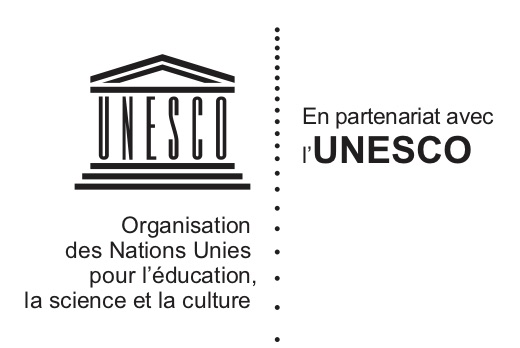Choice of law/droit applicable
Collection japonaise de Netsuke – Winkworth c. Christie’s
Une collection de Netsuke est dérobée en Angleterre, vendue à un collectionneur de bonne foi en Italie et finalement proposée aux enchères en Angleterre. William Winkworth, le propriétaire originaire, reconnaît les objets sur le catalogue de la maison de vente aux enchères Christie’s et agit en justice à Londres afin de voir reconnaître sa propriété sur les biens.
Deux tableaux de Toulouse-Lautrec – Koerfer c. Goldschmidt
En 1940, Jakob Goldschmidt, banquier juif et grand collectionneur d’art se voit retirer la nationalité allemande par le régime nazi qui s’approprie, par la suite, son patrimoine. Deux de ses tableaux du peintre Toulouse-Lautrec sont alors vendus aux enchères publiques et acquises par Jakob Koerfer qui en fait cadeau à sa femme, résidant en Suisse. Au décès de cette dernière, les tableaux sont dévolus aux enfants du couple. En 1956, Alfred Erwin Goldschmidt ouvre contre Jakob Koerfer et ses enfants une action en restitution des tableaux litigieux. Sa demande est rejetée en dernière instance par le Tribunal fédéral selon lequel les héritiers Koerfer sont, d’après le droit suisse, valablement devenus propriétaires des tableaux litigieux.
Die Grosse Seestrasse in Wannsee – X. v. Switzerland
The painting “Die Grosse Seestrasse in Wannsee” was bought in 1948 by François de Diesbach. After de Diesbach’s death, the painting was forgotten within the Swiss embassy. When the Swiss embassy decided to donate the painting to the Liebermann Villa, a distant relative of de Diesbach seized a Swiss court and claimed ownership over the painting. The High Court of the Canton of Bern ultimately held that the Swiss Confederation had acquired ownership over the painting.
Jiroft Collection – Iran v. Barakat Galleries
The Government of the Islamic Republic of Iran sued the London-based Barakat Galleries seeking the restitution of a collection of eighteen carved jars, bowls and cups which had been illicitly excavated in the Jiroft region, in Southeast Iran, and subsequently exported abroad. The Court of Appeal, overruling the trial court decision, held that the relevant laws of Iran were sufficiently clear to vest ownership title and an immediate right of possession of the relics in the Iranian State.
Kanakaria Mosaics – Autocephalous Greek Orthodox Church of Cyprus and Cyprus v. Goldberg
Four mosaics were stolen from the Cypriot Church of the Panagia Kanakaria in Lythrankomi, following the Turkish military intervention in Cyprus of 1974. Afterwards, they were purchased by an American art dealer, Peg Goldberg. In 1989, the Autocephalous Greek Orthodox Church of Cyprus and the Republic of Cyprus traced the mosaics to Indiana and filed a judicial claim to obtain restitution.
Maori Panels – New Zealand and Ortiz Heirs
In 1972, five rare Maori wooden panels were discovered in a swamp in New Zealand’s North Island. Shortly after the discovery, the panels were illegally exported out of the country by an antiquities dealer and then bought by Swiss collector George Ortiz. In 2014 New Zealand obtained the return of the Maori panels by virtue of an agreement with the heirs of Ortiz.
Mosaïques de Kanakaria – Autocephalous Greek Orthodox Church of Cyprus et Chypre c. Goldberg
Quatre mosaïques sont volées dans l’Eglise chypriote du village de Lythrankomi. Une dizaine d’années plus tard, elles sont achetées par Goldberg, une commerçante d’art américaine. L’Eglise chypriote finit par apprendre le lieu où se trouvent les mosaïques et la personne en possession de celles-ci. Peu après, l’Eglise chypriote et la République de Chypre introduisent une action en justice auprès des tribunaux de l’Etat de l’Indiana aux Etats-Unis.
Pièces d’or géantes – Inde c. Crédit Agricole Indosuez SA
Deux pièces d’or géantes anciennes d’une valeur exceptionnelle, tant d’un point de vue économique que culturel, sont mises en gage auprès d’une Banque à Genève par le petit-fils de l’ancien Nizam de la Principauté d’Hyderabad. L’Inde introduit une action auprès des tribunaux genevois dans le but d’en obtenir la restitution.
Schiele Drawing – Grunbaum Heirs v. David Bakalar
In 1938, the Nazi expropriated the art collection of Fritz Grunbaum while he was detained in Dachau concentration camp. In 1963, David Bakalar purchased a Schiele drawing that had belonged to the Grunbaum family from a gallery in Bern.
Two Dürer Paintings – Kunstsammlungen Zu Weimar v. Elicofon
In 1945, two portraits by Albrecht Dürer were stolen from the collection of the Staatliche Kunstsammlungen zu Weimar. Stored for safekeeping in the Schwarburg Castle during the Second World War, the paintings disappeared during the time that American troops occupied the Castle.
Victorious Youth – Italy v. J. Paul Getty Museum
The “Victorious Youth” – a life-size bronze statue created sometime between the 4th and 2nd century BC – is at the centre of an ongoing dispute between Italy and the J. Paul Getty Museum. This statue was discovered in 1964, caught up in the nets of a fishing boat working out of the port of Fano on the Adriatic coast of Italy.
Document Actions










